
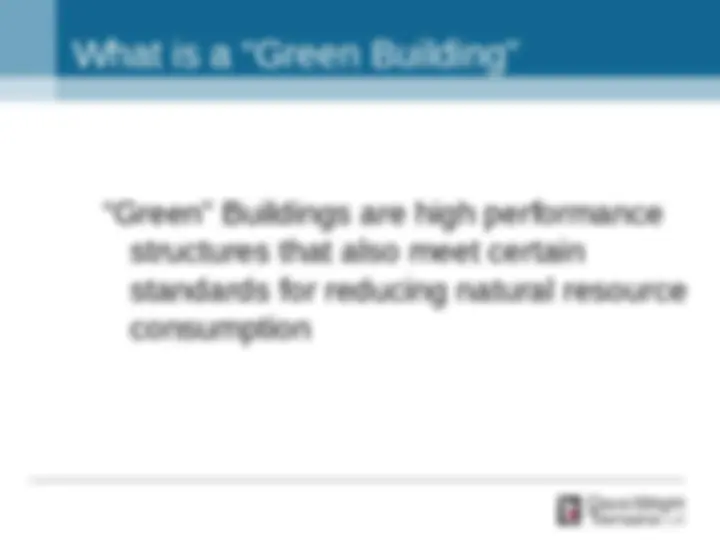
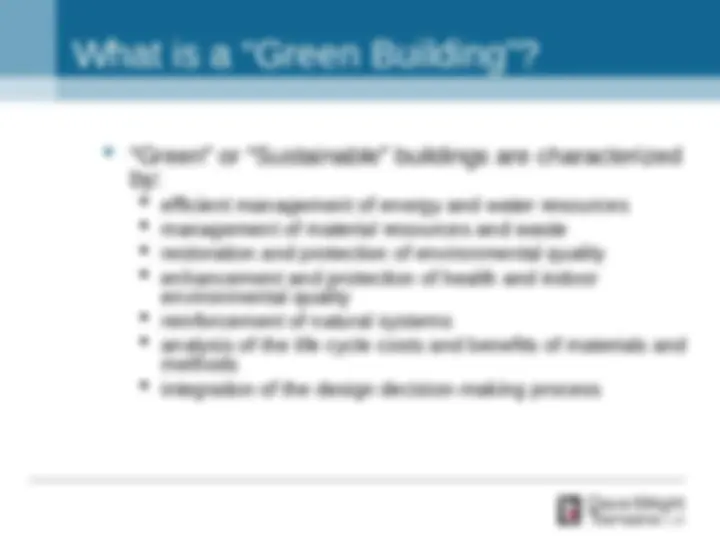
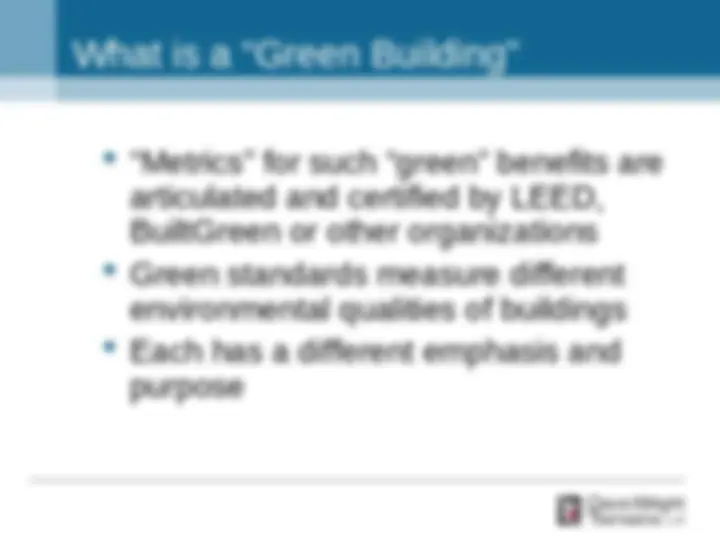
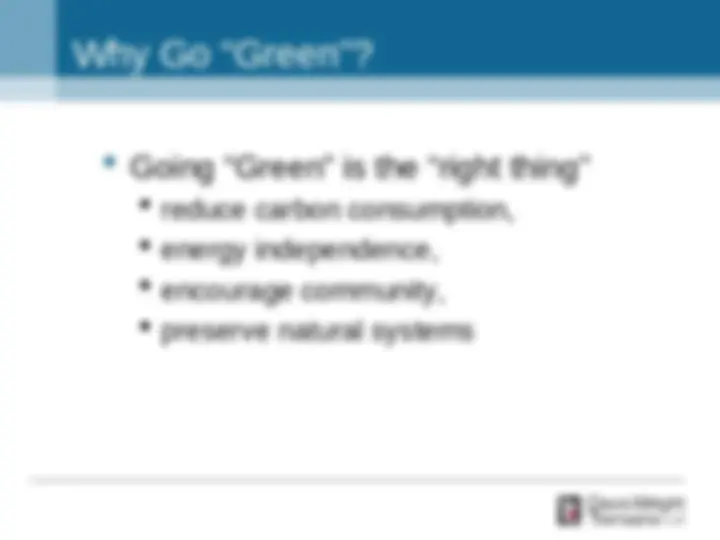

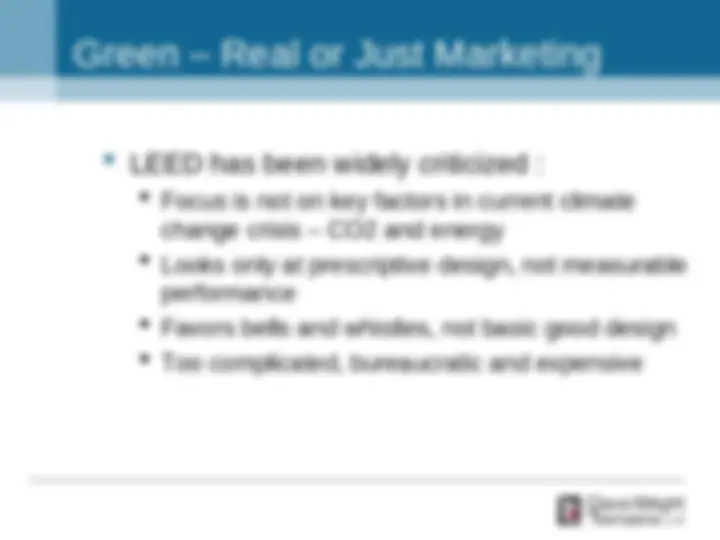
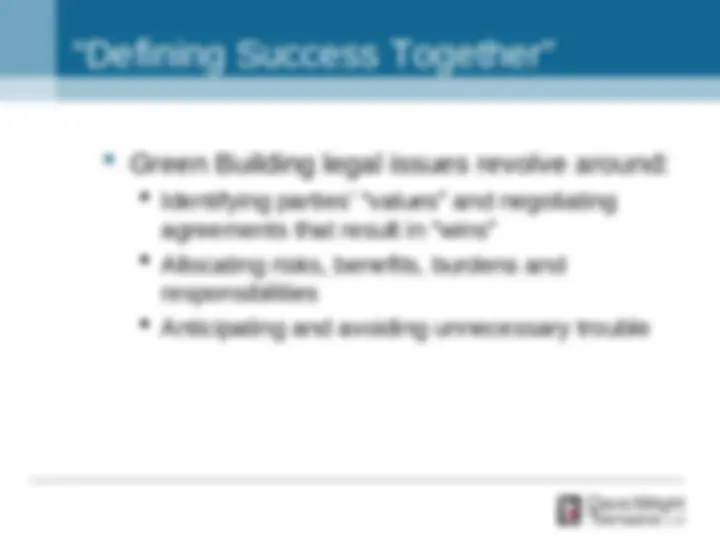
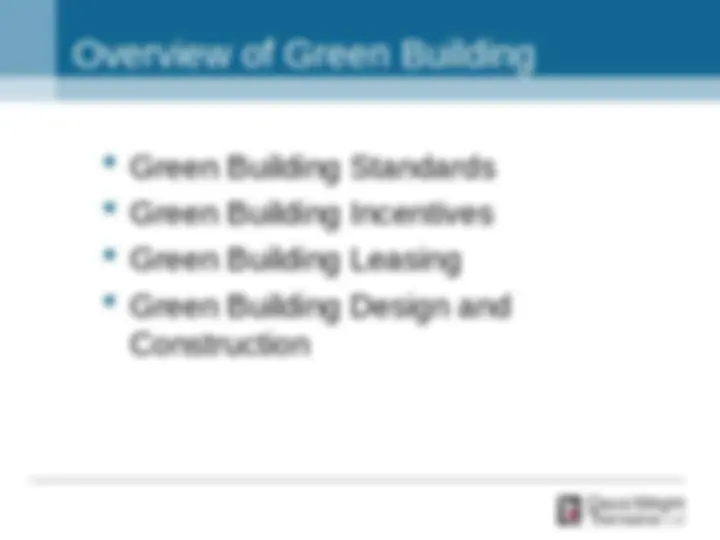
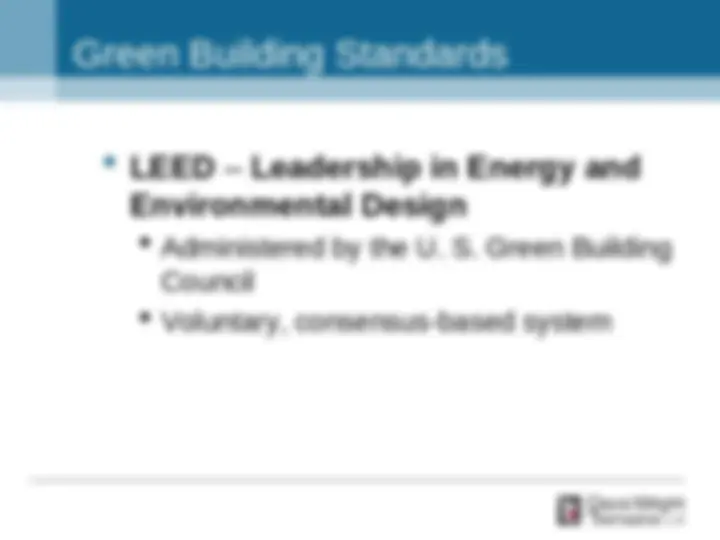
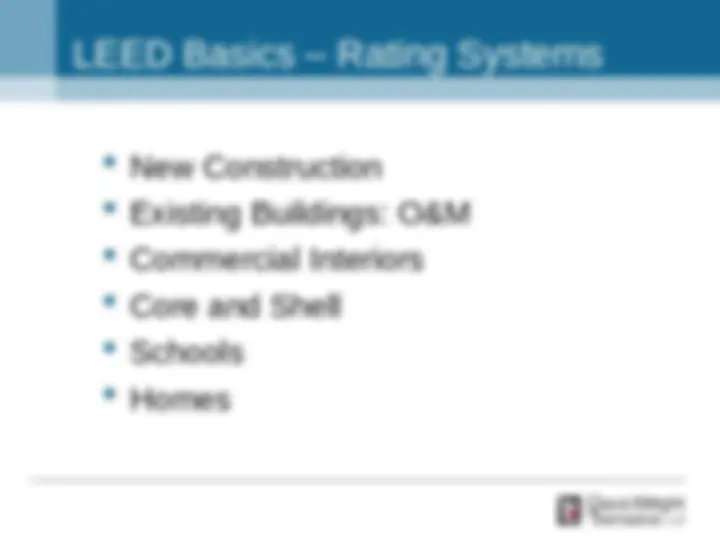
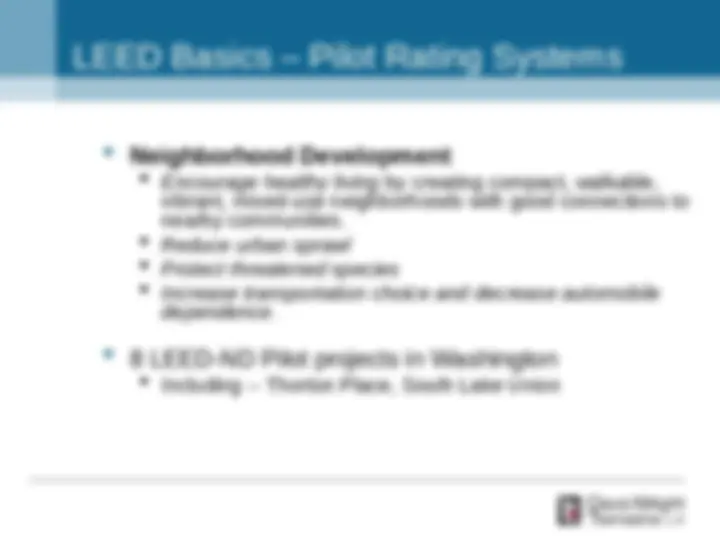
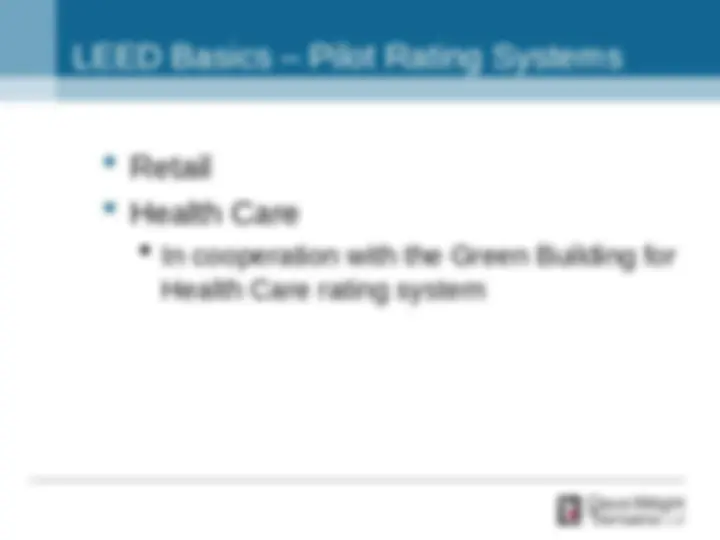
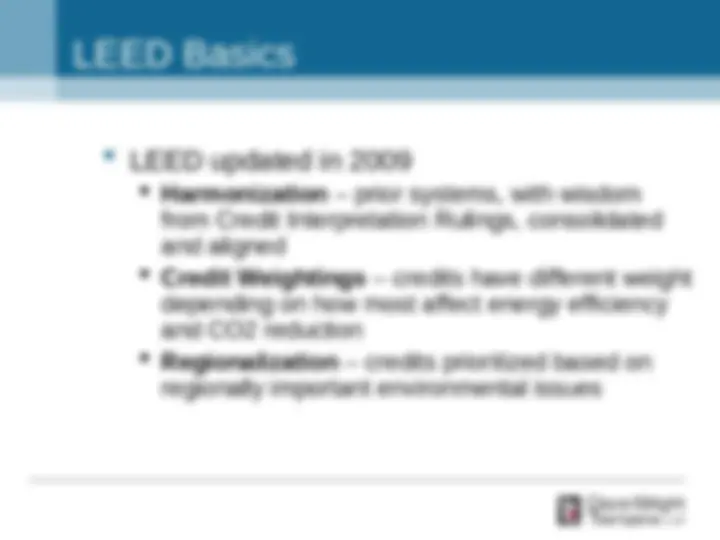
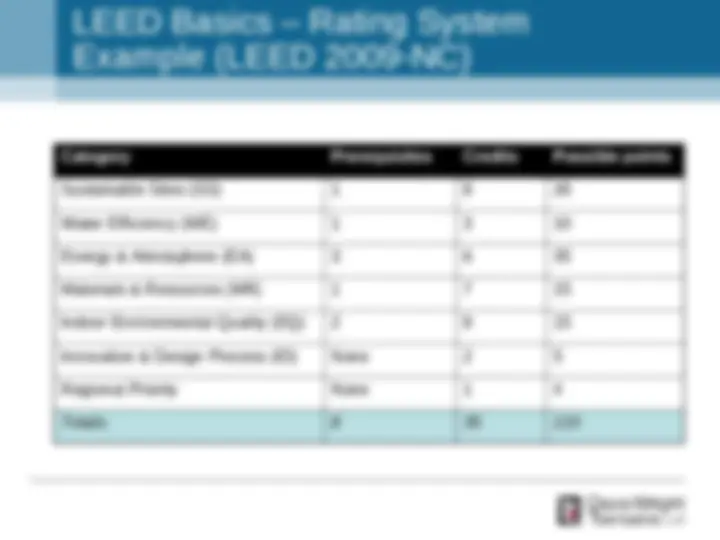
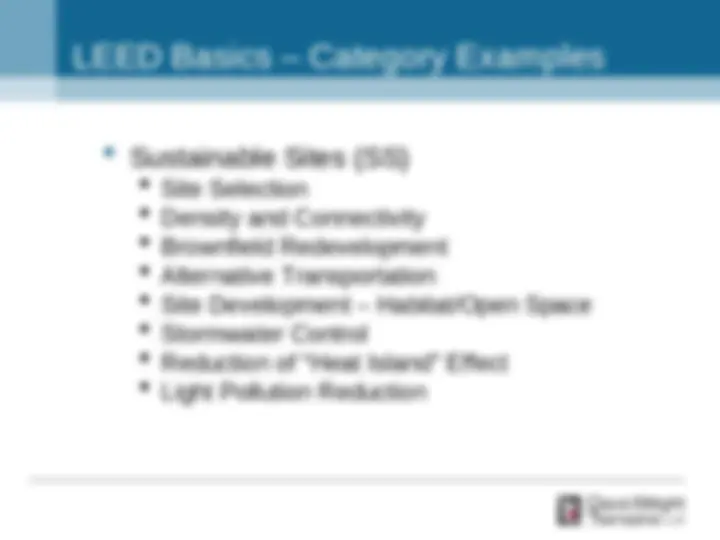
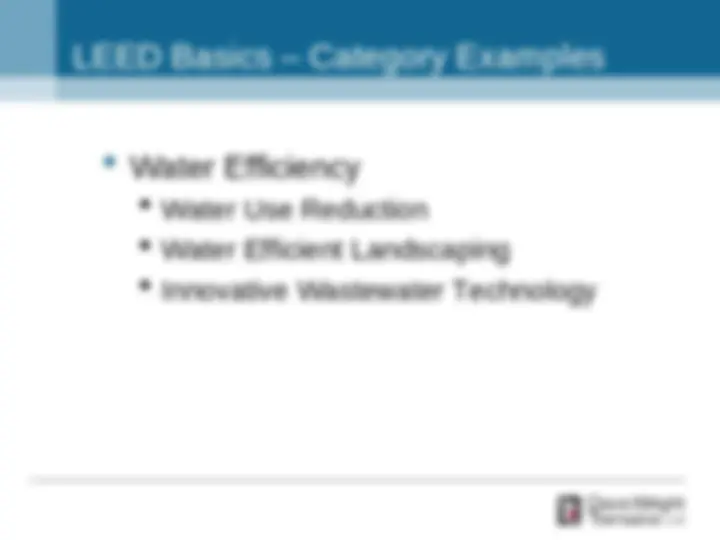
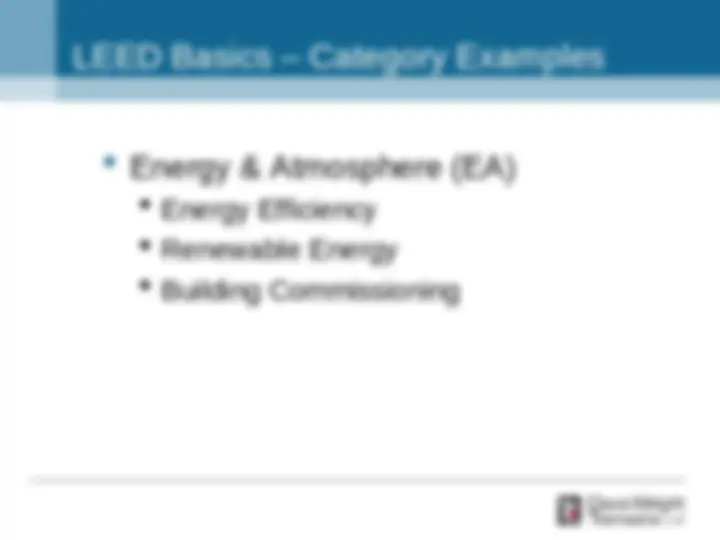
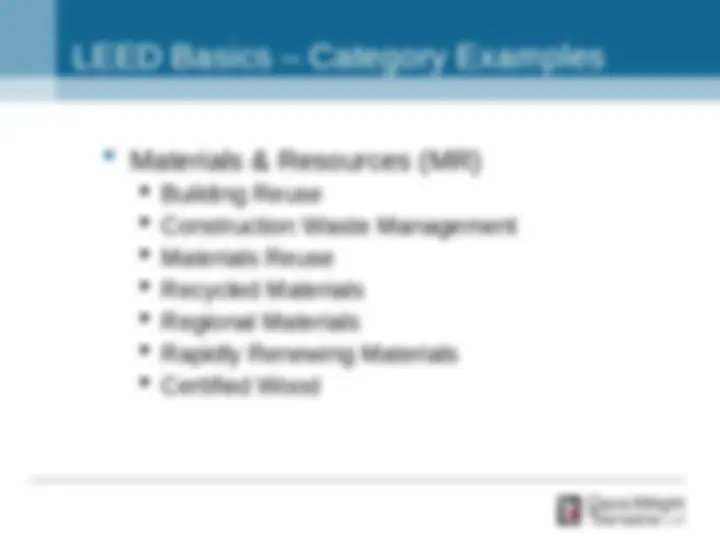
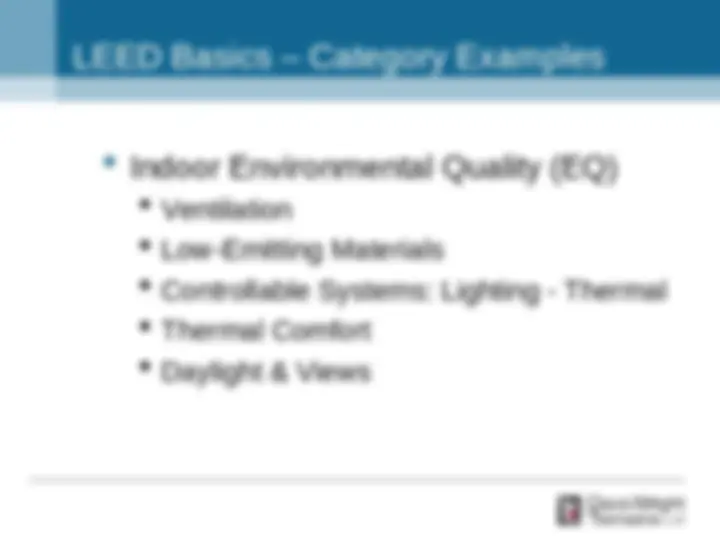
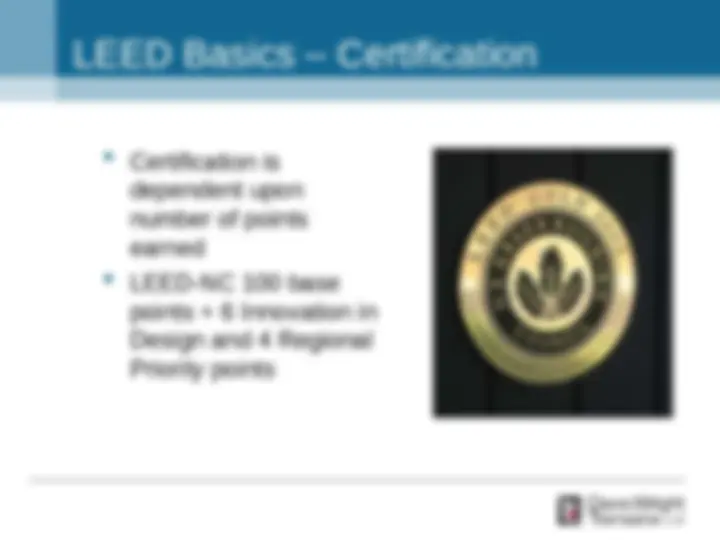
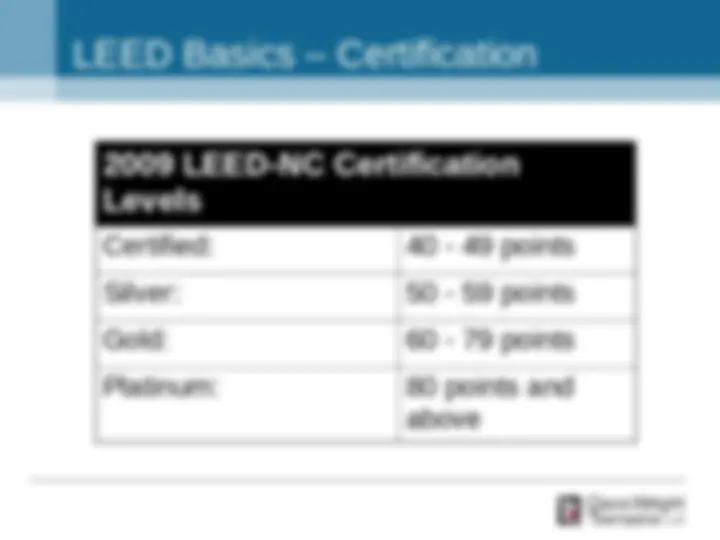
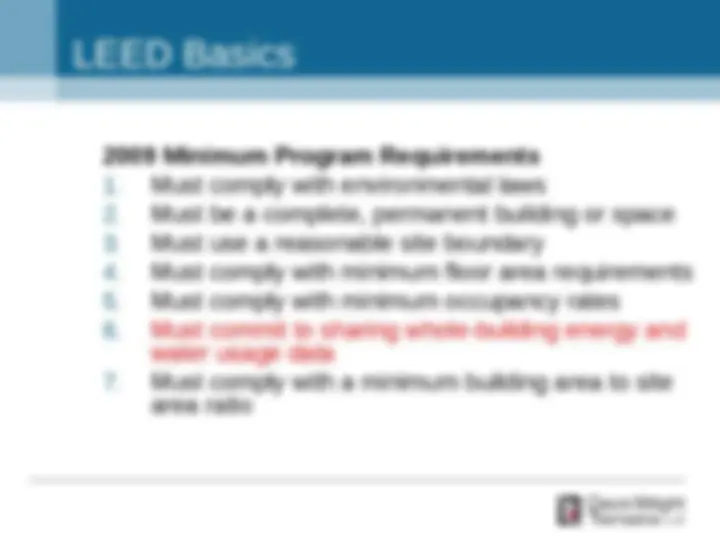
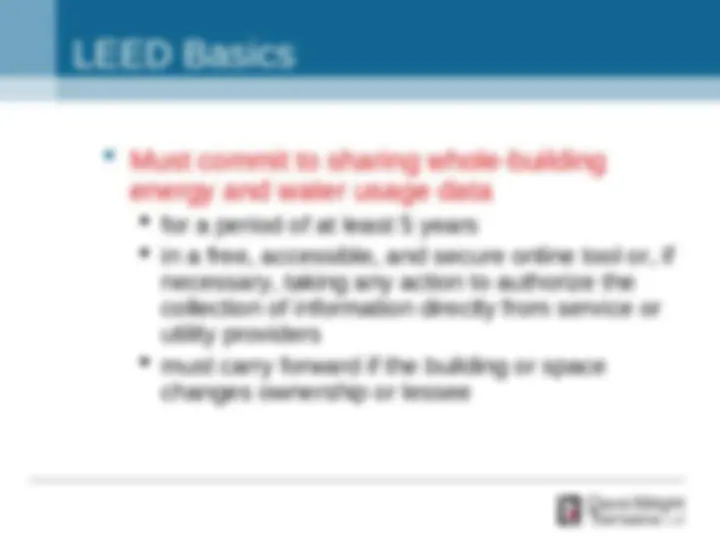
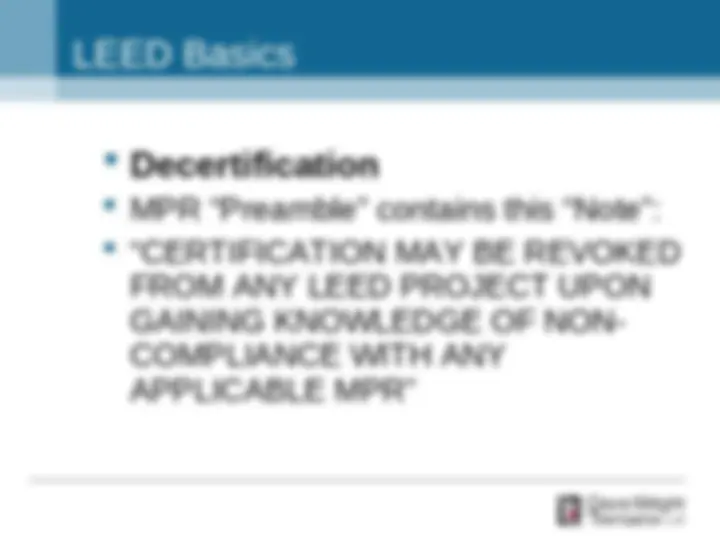
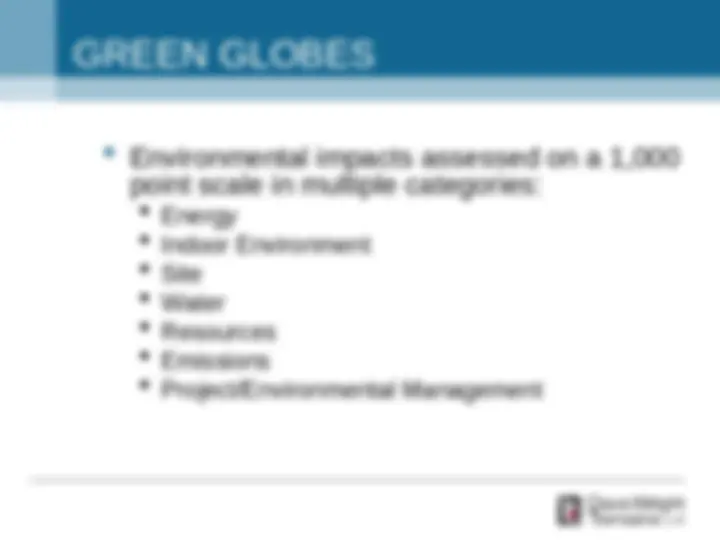
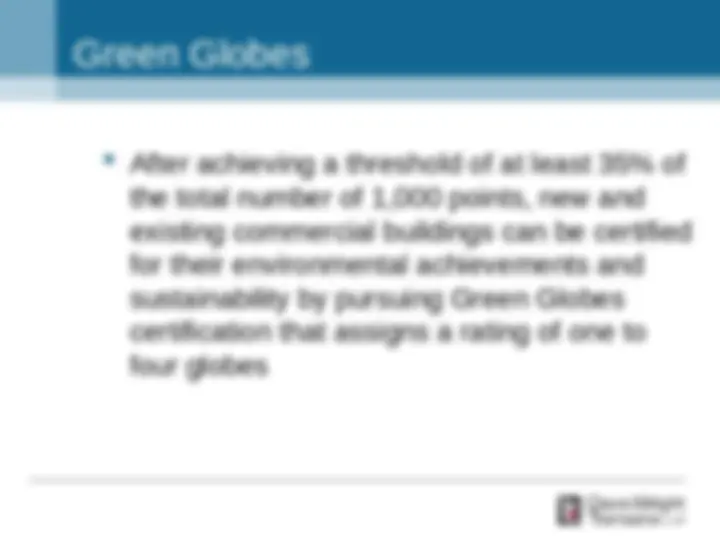
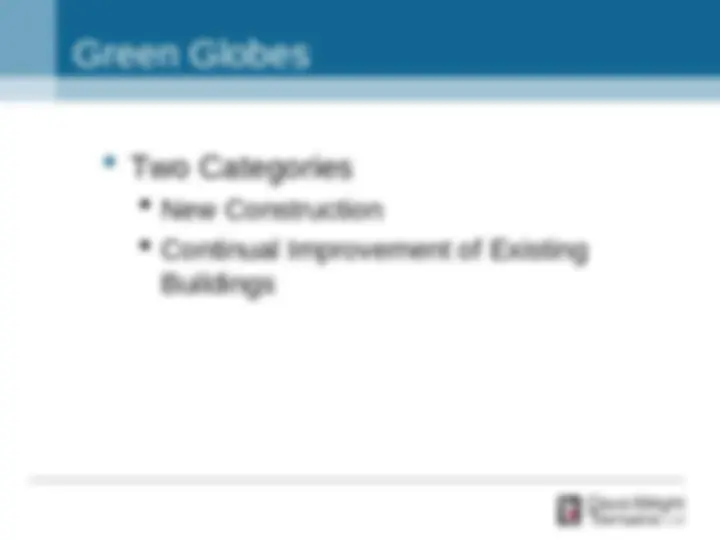
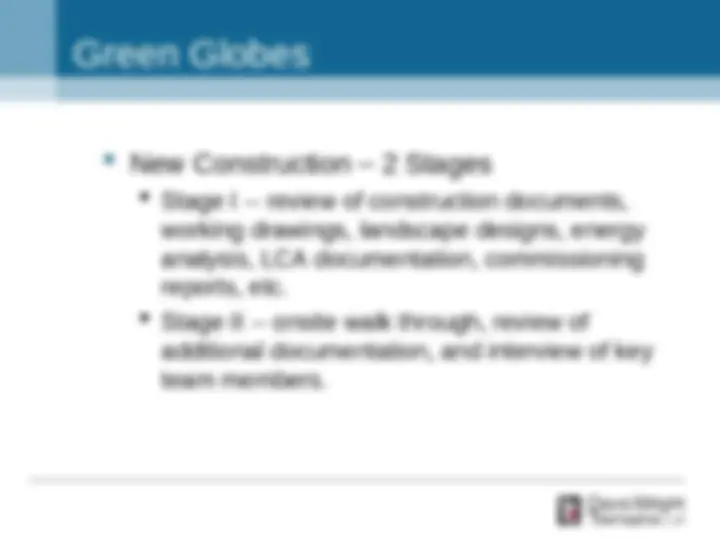
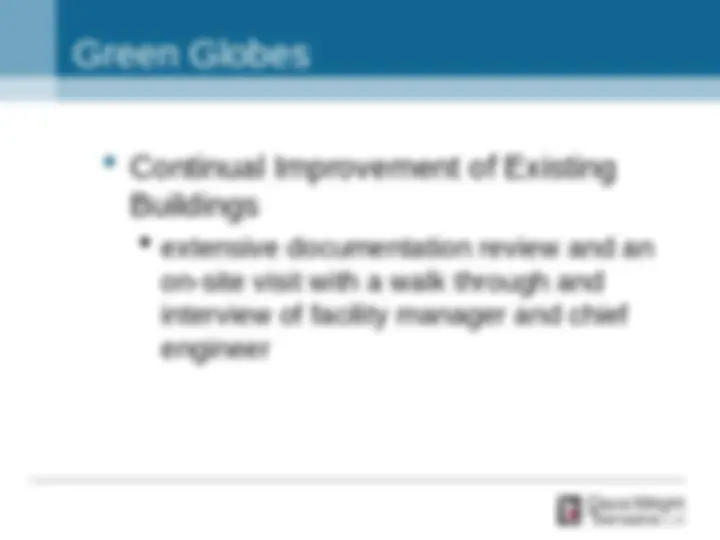
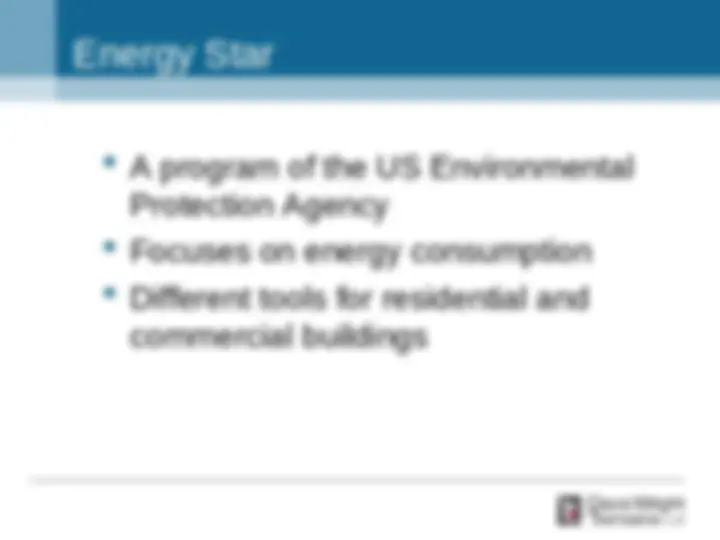
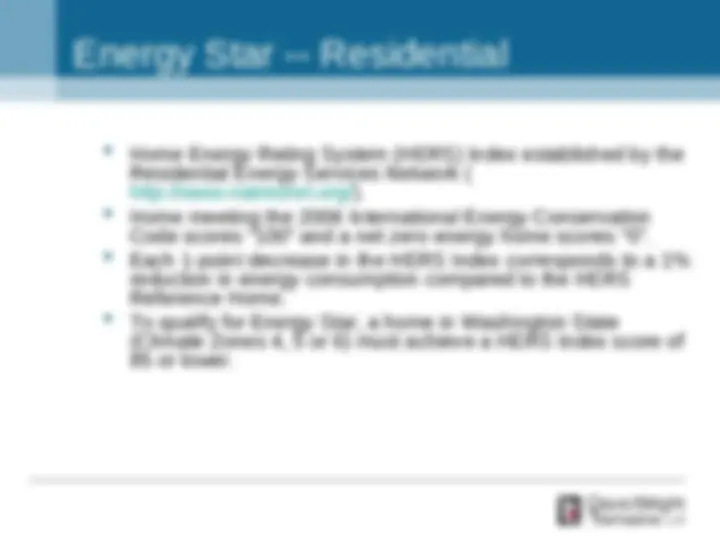
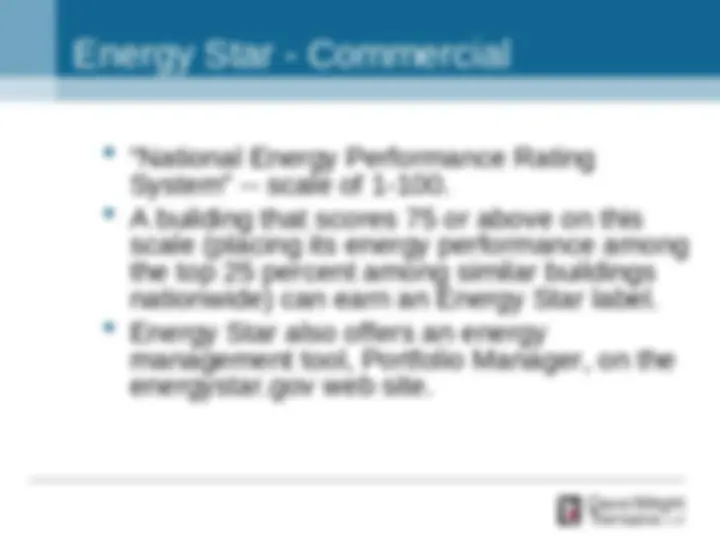
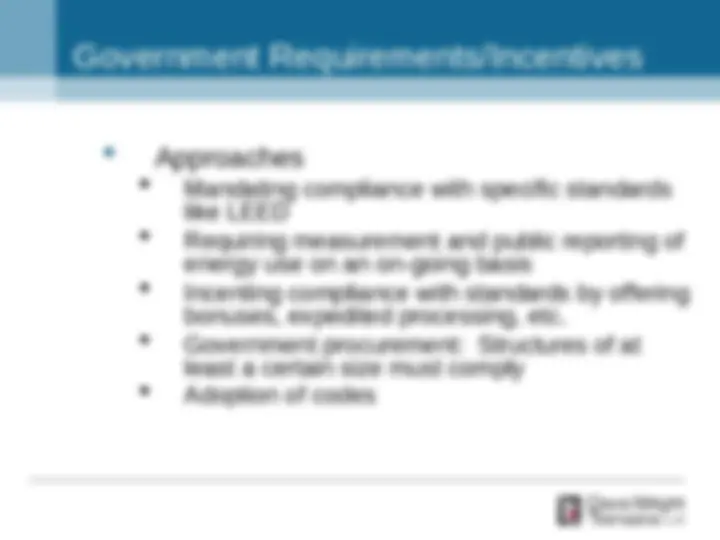
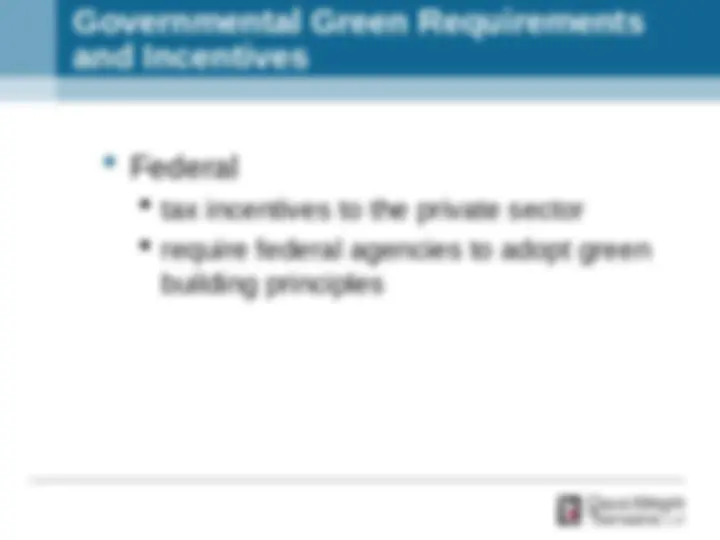
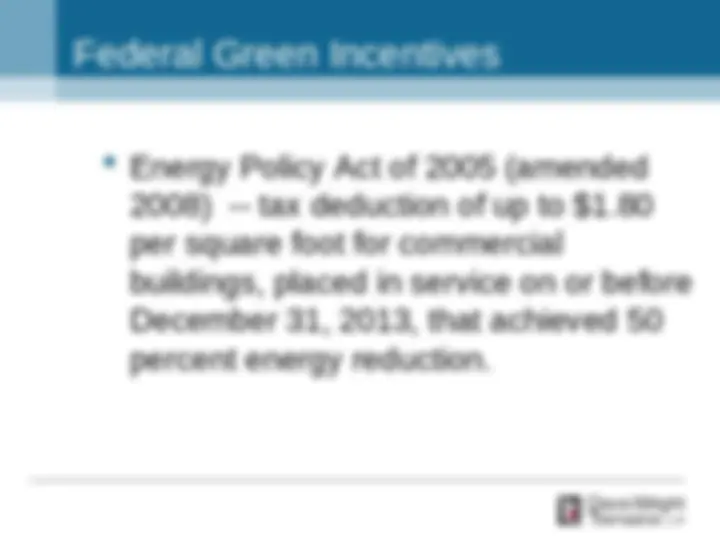
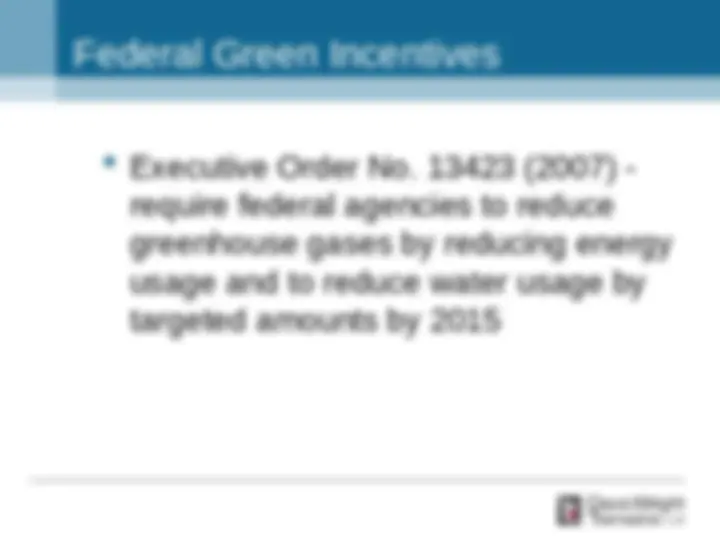
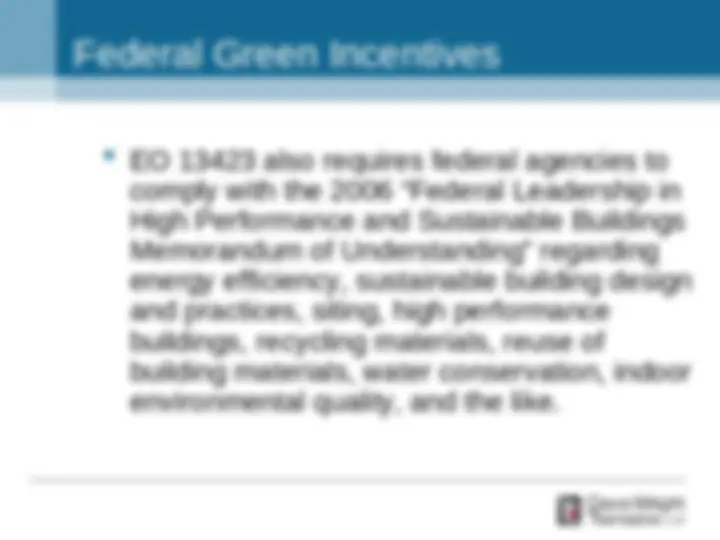
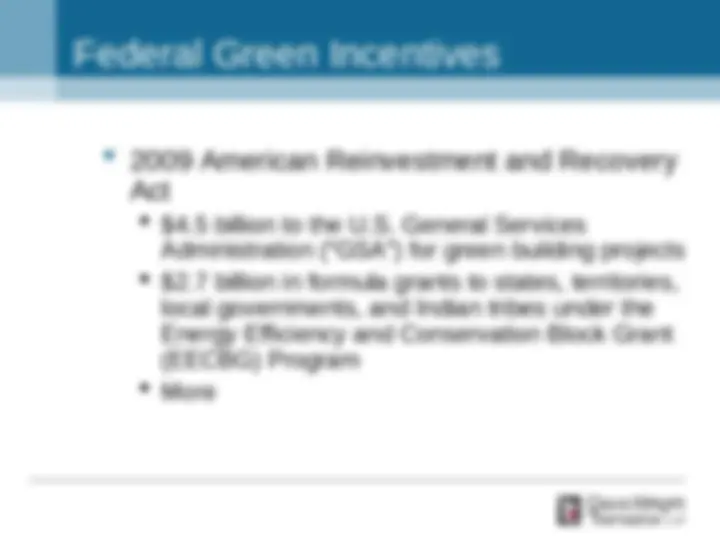
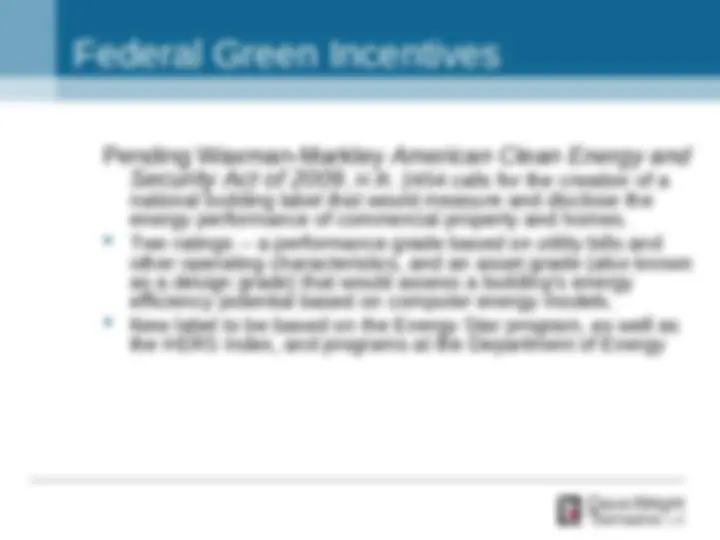
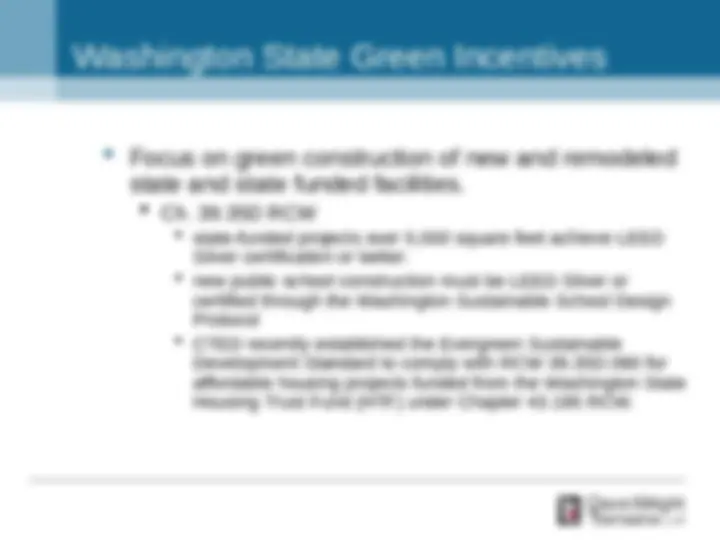
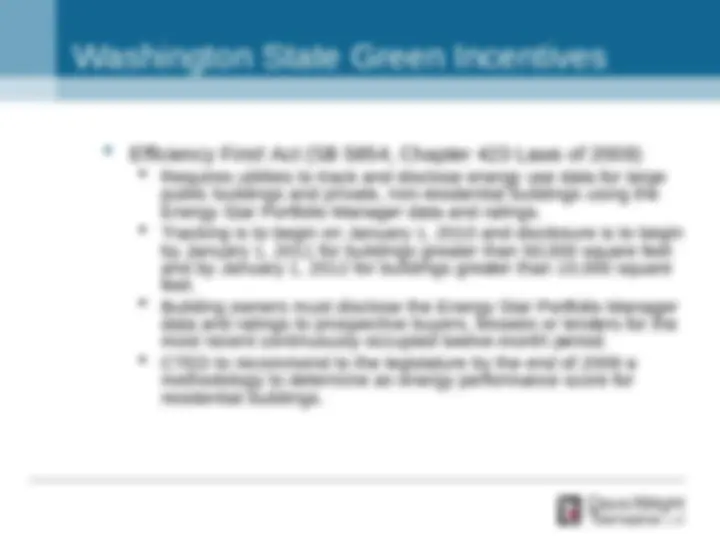
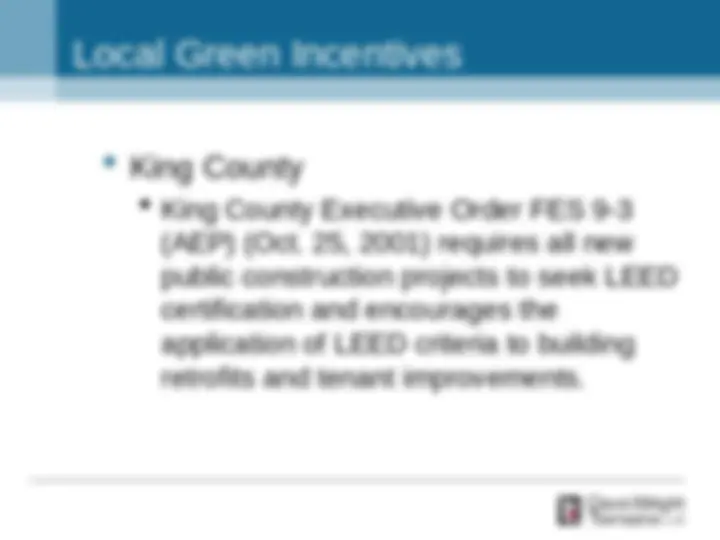
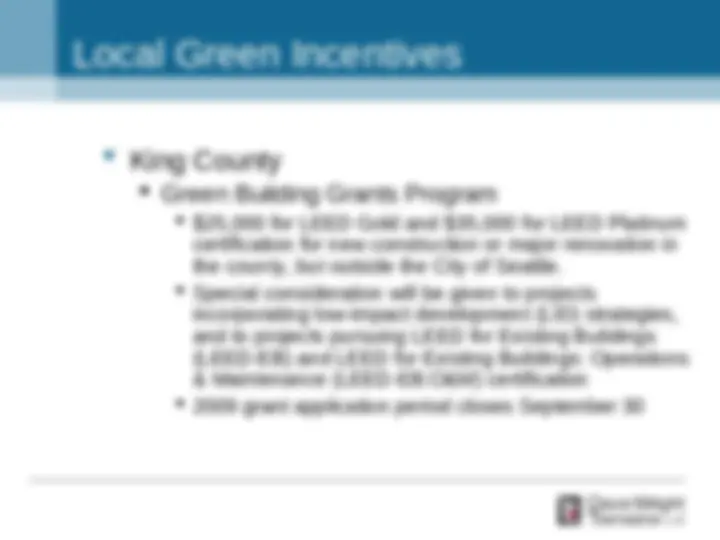
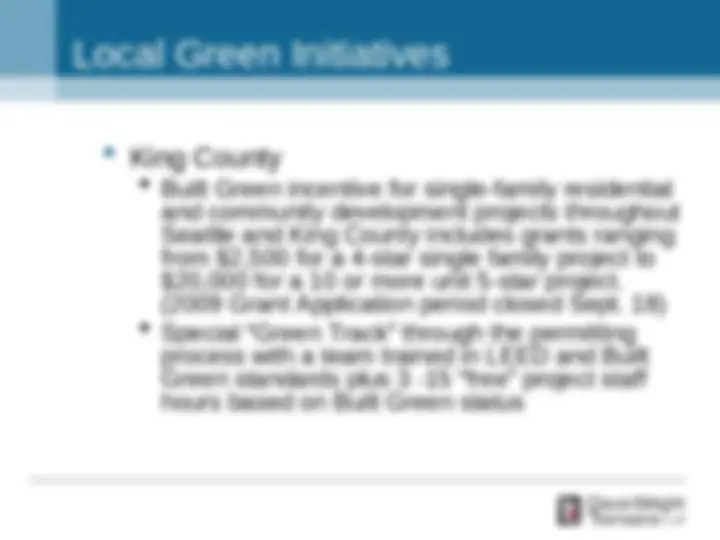
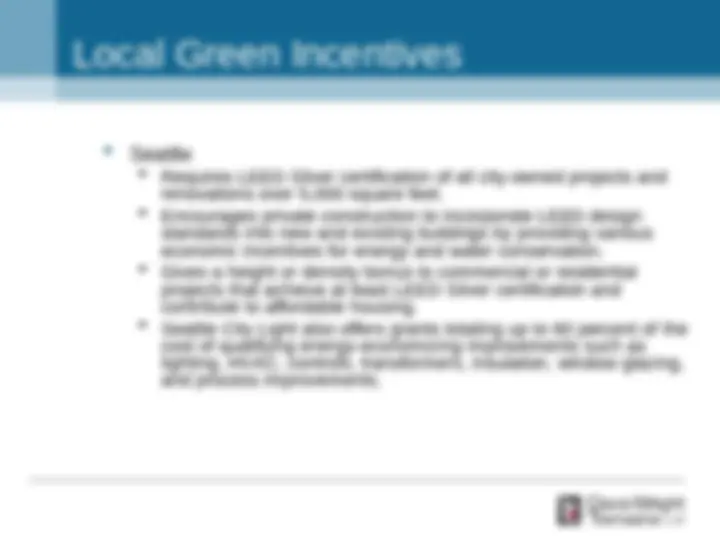
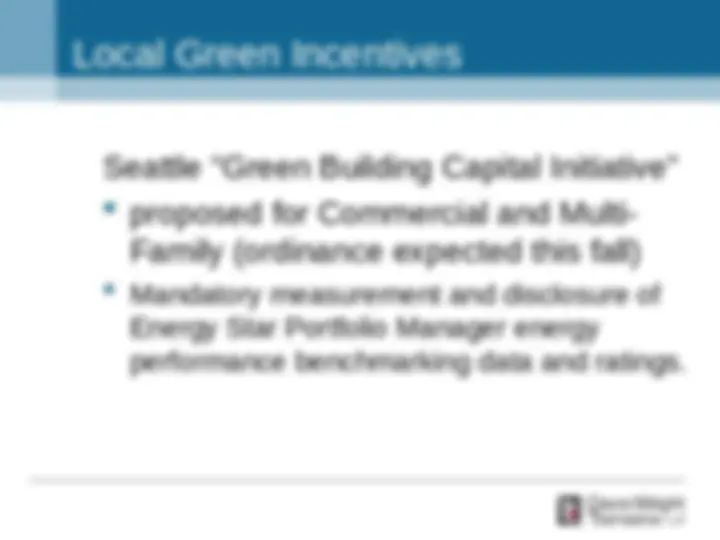
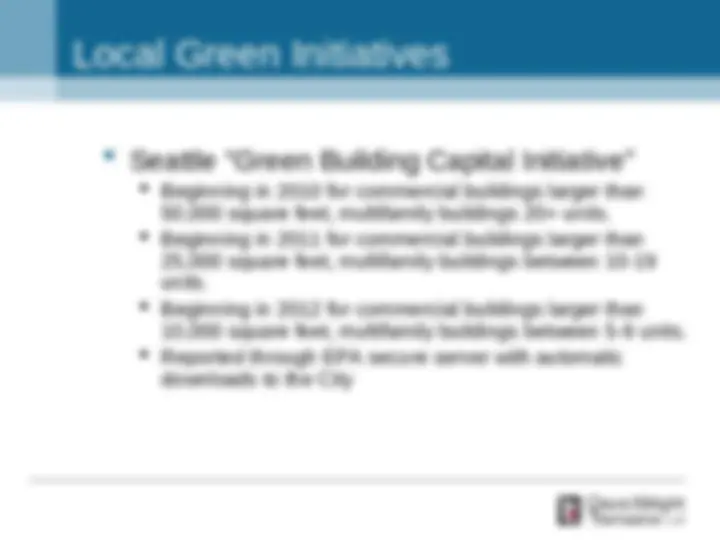
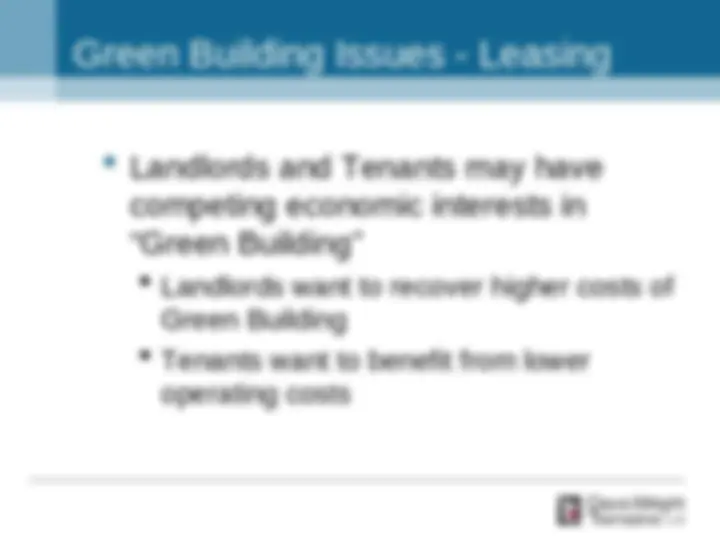
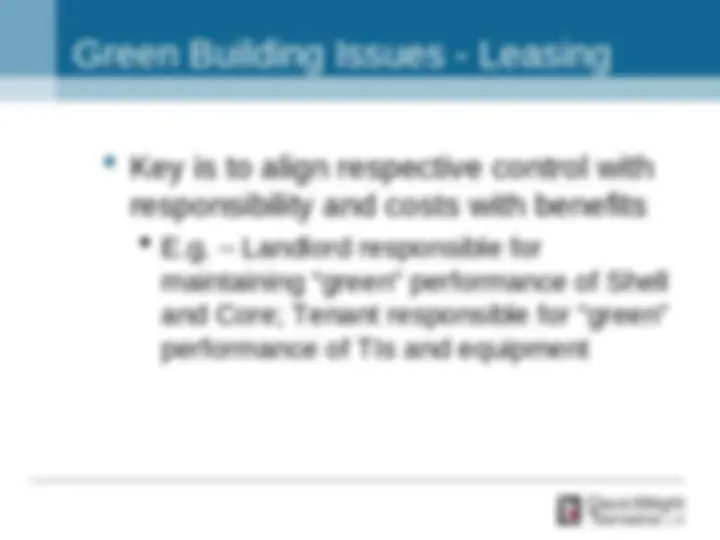
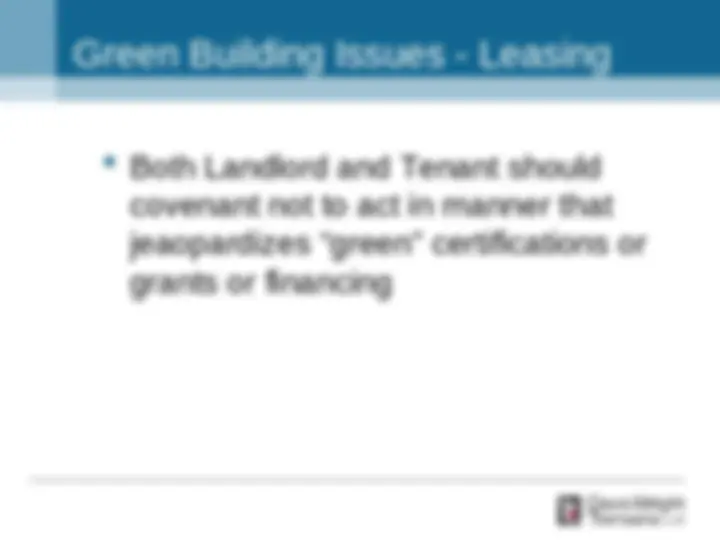
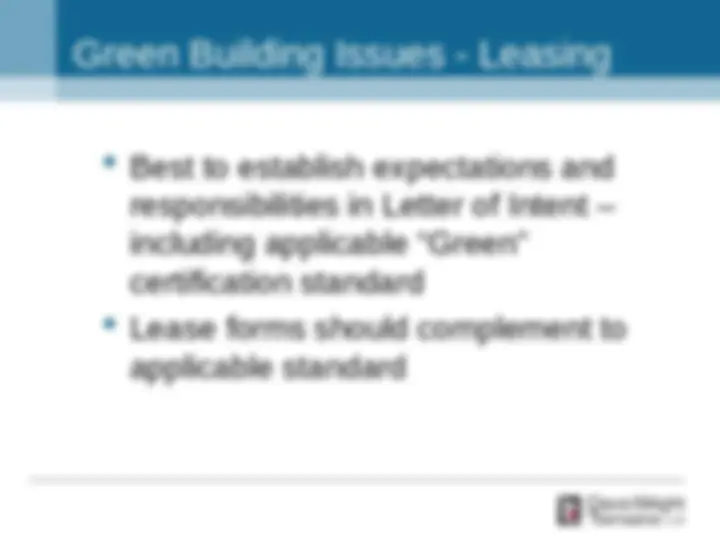
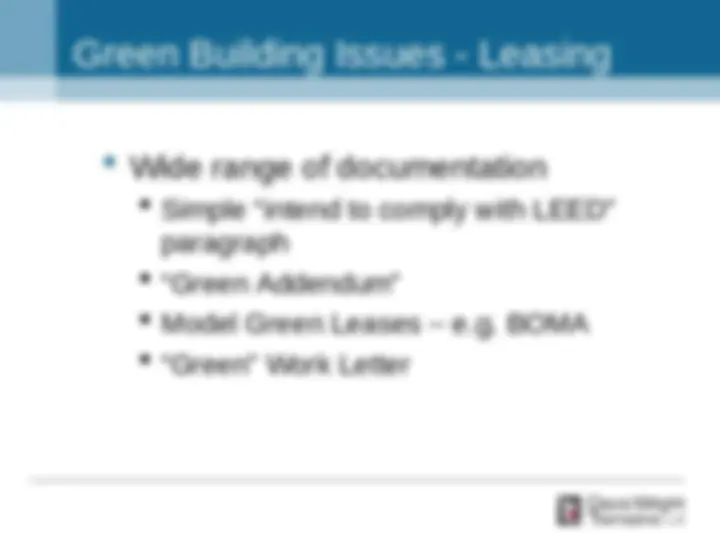
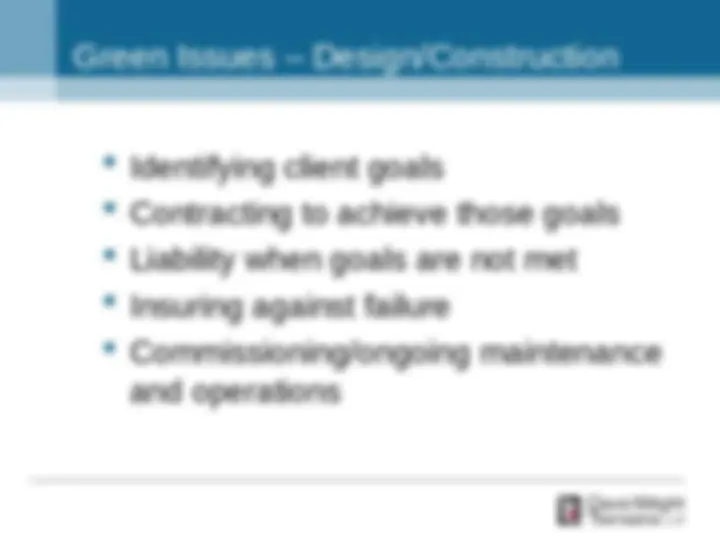
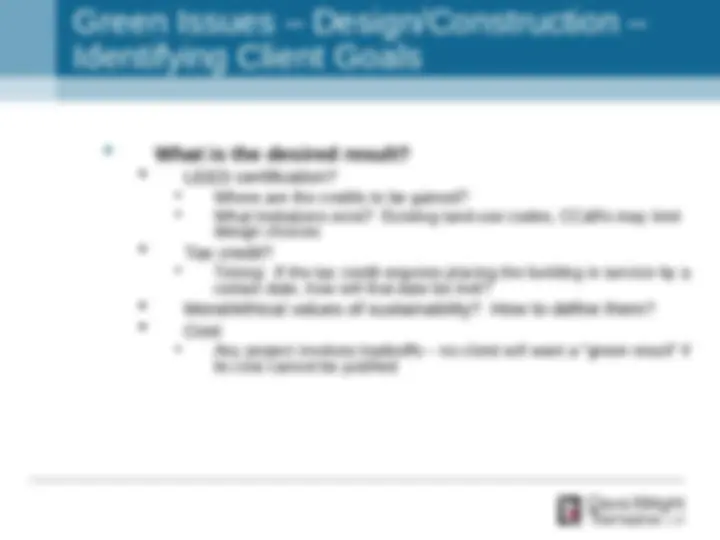
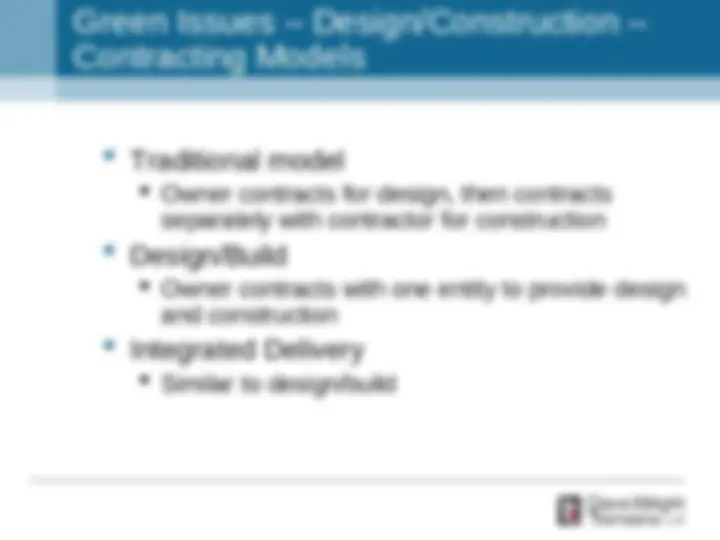
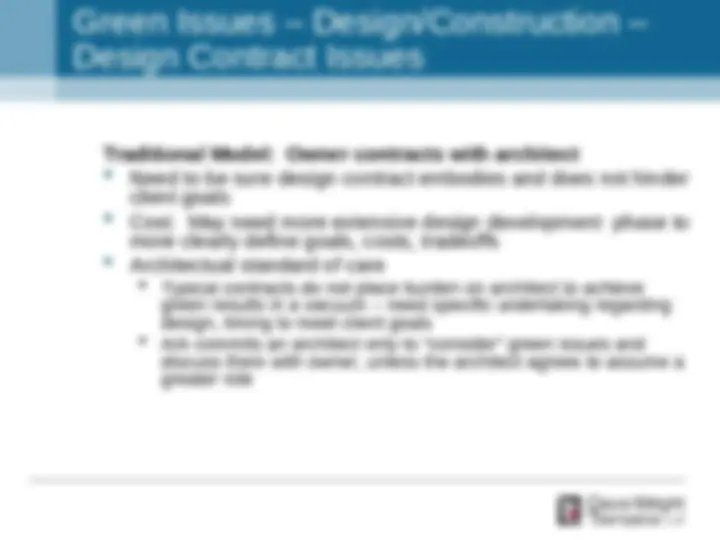
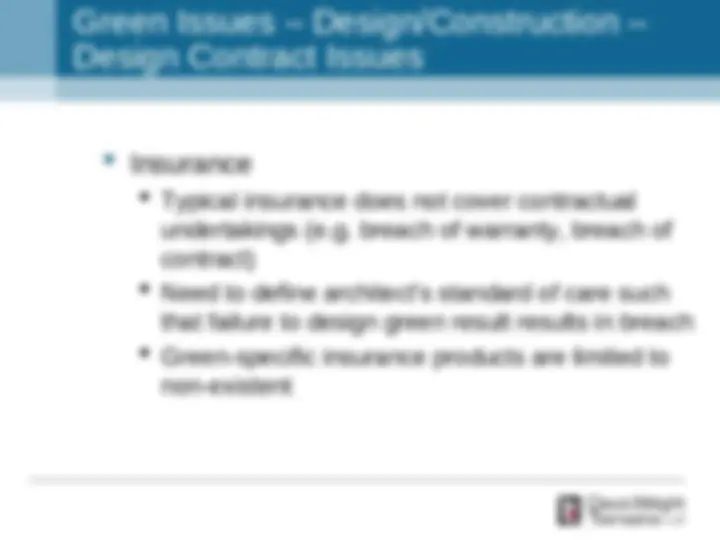
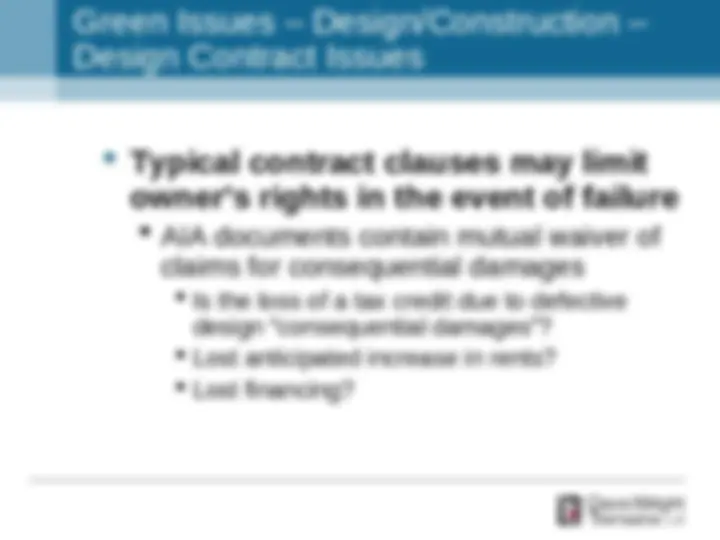
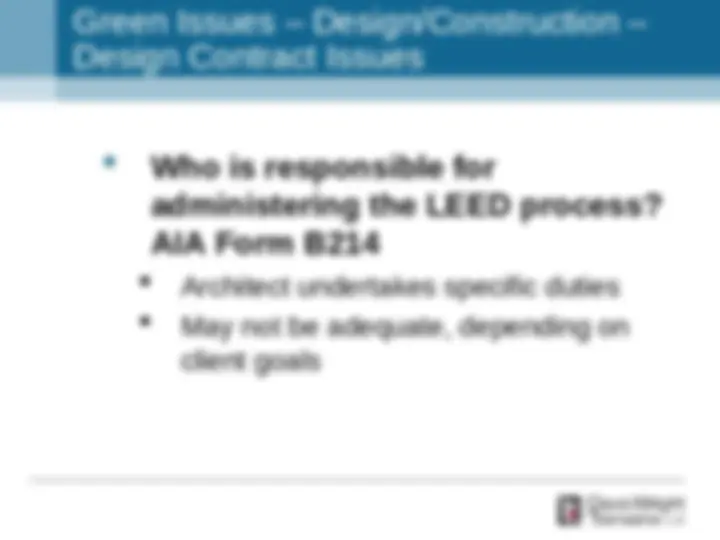
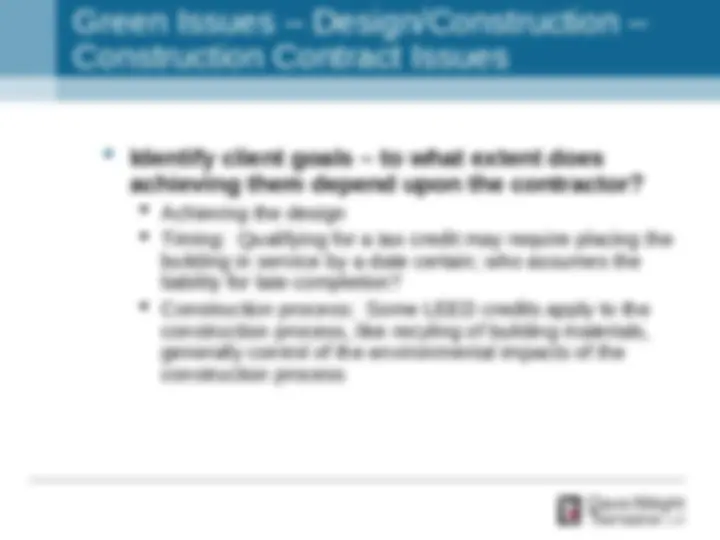
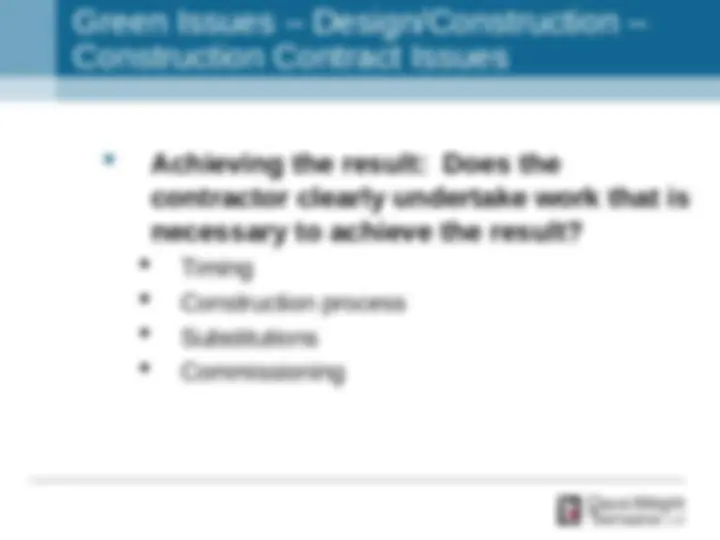
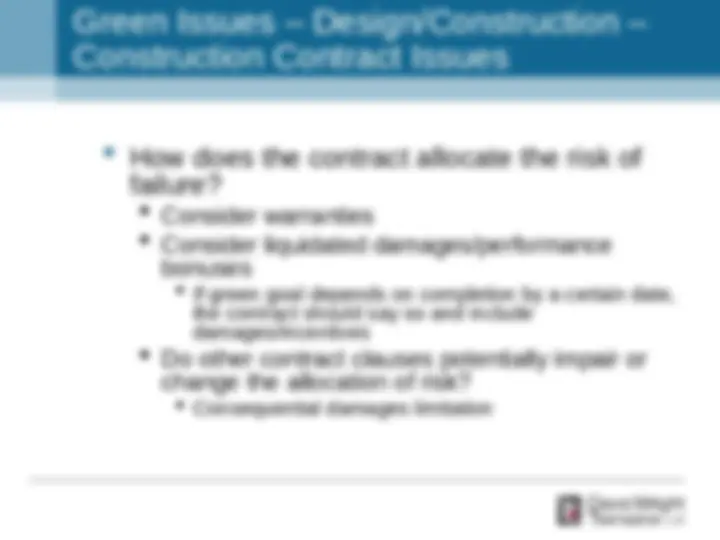
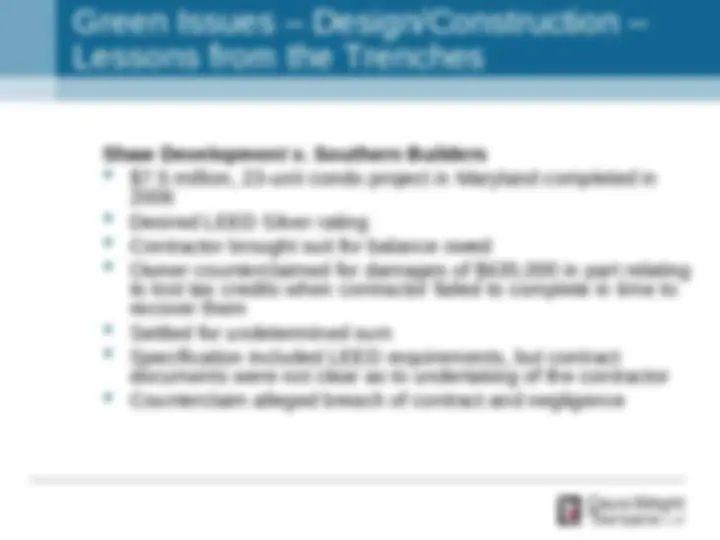
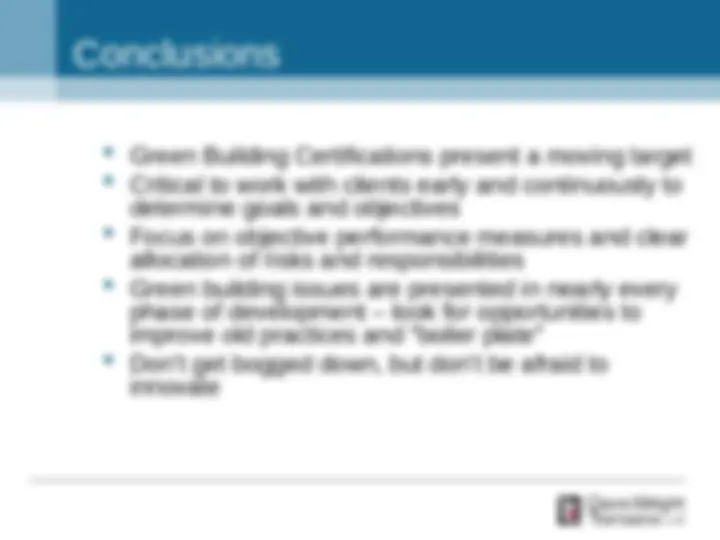


Study with the several resources on Docsity

Earn points by helping other students or get them with a premium plan


Prepare for your exams
Study with the several resources on Docsity

Earn points to download
Earn points by helping other students or get them with a premium plan
Community
Ask the community for help and clear up your study doubts
Discover the best universities in your country according to Docsity users
Free resources
Download our free guides on studying techniques, anxiety management strategies, and thesis advice from Docsity tutors
green building rating system leed and other are also use
Typology: Lecture notes
1 / 72

This page cannot be seen from the preview
Don't miss anything!

































































Presentation to East King County Bar Association September 23, 2009 Jim Greenfield and Alan Middleton
(^) Overview of Green Building Green Building Standards (^) Green Building Incentives Green Building Issues – Leasing (^) Green Building Issues – Design and Construction
(^) “Green” or “Sustainable” buildings are characterized by: (^) efficient management of energy and water resources (^) management of material resources and waste (^) restoration and protection of environmental quality (^) enhancement and protection of health and indoor environmental quality (^) reinforcement of natural systems (^) analysis of the life cycle costs and benefits of materials and methods (^) integration of the design decision-making process
(^) “Metrics” for such “green” benefits are articulated and certified by LEED, BuiltGreen or other organizations (^) Green standards measure different environmental qualities of buildings (^) Each has a different emphasis and purpose
(^) Green makes business sense (^) Increased flexibility to allow for longer building and TI useful life and reuse of materials (^) Improved building performance (^) Increased revenue (higher rents/sales price, improved productivity, fewer/shorter vacancies) (^) Lower cost (utilities, costs of conversion)
(^) Going “Green” is the “right thing” (^) reduce carbon consumption, (^) energy independence, (^) encourage community, (^) preserve natural systems
(^) LEED has been widely criticized : (^) Focus is not on key factors in current climate change crisis – CO2 and energy (^) Looks only at prescriptive design, not measurable performance (^) Favors bells and whistles, not basic good design (^) Too complicated, bureaucratic and expensive
(^) LEED not necessarily valued in marketplace (^) 2009 RICS Study: LEED rating did not statistically improve rents while Energy Star rating associated with rents higher by 3.3%
(^) Green Building legal issues revolve around: (^) Identifying parties’ “values” and negotiating agreements that result in “wins” (^) Allocating risks, benefits, burdens and responsibilities (^) Anticipating and avoiding unnecessary trouble
(^) Green Building Standards Green Building Incentives (^) Green Building Leasing Green Building Design and Construction
(^) The “built environment” accounts for approximately: (^) 40% of global consumption of raw materials (^) 37% of primary U. S. energy consumption (operations) (^) 68% of U. S. electricity consumption (^) 12% of U. S. potable water consumption (^) 40% of U. S. sold waste stream (^) 35% of U. S. carbon dioxide emissions
(^) Advertised as: (^) Reducing environmental impact (^) Reducing operating costs (^) Increasing occupant comfort and productivity (^) Other potential benefits: (^) Higher rents? (^) Higher sales price?
(^) Neighborhood Development (^) Encourage healthy living by creating compact, walkable, vibrant, mixed-use neighborhoods with good connections to nearby communities. (^) Reduce urban sprawl (^) Protect threatened species (^) Increase transportation choice and decrease automobile dependence. (^) 8 LEED-ND Pilot projects in Washington (^) Including -- Thorton Place, South Lake Union
(^) Retail Health Care (^) In cooperation with the Green Building for Health Care rating system